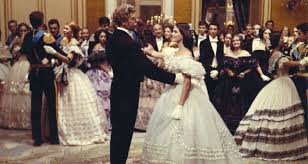“The Leopard” (Il Gattopardo)

“The Leopard” (Il Gattopardo), published posthumously in 1958, is one of the most acclaimed novels of Italian literature. Written by Giuseppe Tomasi di Lampedusa, it is a tale of decline, change, and the passage of time, set against the backdrop of 19th-century Sicily during the Risorgimento—the period of Italian unification. The novel tells the story of Prince Fabrizio Salina, an aristocratic figure who observes the transformation of society and politics as the old aristocracy fades, and a new social order emerges.
Plot Overview:
The narrative follows Prince Fabrizio Salina, a nobleman of the Sicilian aristocracy, as he contemplates his family’s waning power and the sweeping social changes brought by the unification of Italy. The story spans several decades, reflecting the shifting political and social landscapes of Sicily. Fabrizio’s reflections on his life, his family, and the futility of resisting change form the core of the novel. Through the lens of the prince’s experiences, Lampedusa presents a broader commentary on the inevitable fall of the aristocracy, and the rise of the bourgeoisie.
Themes and Style:
The novel is known for its profound themes of decay, change, and the inevitability of time. Lampedusa’s narrative is rich with symbolism, using the decline of the aristocracy as a metaphor for the death of an old world and the birth of a new, often uncomfortable, era. Prince Fabrizio embodies this paradox: he is aware of his social class’s fading relevance, yet he is resigned to the inevitable nature of this decline.
Lampedusa’s style is lush and reflective. His prose is elegant and often melancholic, capturing the deep internal struggles of his characters as they grapple with their place in a rapidly changing world. The pacing of the novel can be slow at times, as it focuses more on internal reflections than on action, but this slow unraveling of the character’s mind gives the reader an intimate understanding of the emotional and intellectual complexity of the prince.
Characters:
The characters in The Leopard are richly drawn, each embodying a different facet of the shifting social order. Prince Fabrizio Salina, the central character, is a symbol of the old aristocracy, wise and weary, but ultimately powerless in the face of inevitable social change. His nephew, Tancredi, represents the young, dynamic force of the emerging political order, eager to seize opportunities that come with the changing times. The beautiful Angelica, a young woman who becomes Tancredi’s love interest, is an embodiment of the new bourgeoisie, attractive, ambitious, and willing to embrace change.











